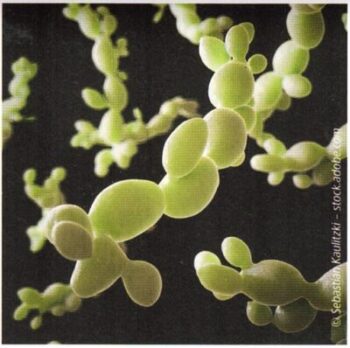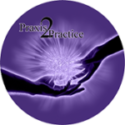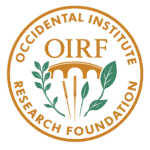Strong Lungs
Pulmonary Mycoses
The Importance of Mucosal Systems and Important Distinction
Between Mucosal and Molds in Diagnosis and Therapy
Severe, inflammatory pulmonary mycoses are relatively rare in the practice of a naturopath. A strict distinction must be made as to whether it is an inflammatory pulmonary mycosis (with rapid and extensive damage to vital functions) or an allergic problem. As a result, the courses vary from mild, self-limiting infections to life-threatening diseases, with appropriate treatment approaches.
Basically, the question at the beginning is: Was the pulmonary mycosis triggered by mucosal fungi or mold? In principle, mucosal fungal infestation (e.g. caused by Candida species) causes a more inflammatory reaction, whereas mold infestation (e.g. by Aspergillus) has more of an allergic component. Fortunately, the lungs – in contrast to the intestines (more on this later) – are relatively well protected.
However, if there is a chain reaction (restricted breath – gases can no longer be exhaled – poisoning – disturbed alkaline balance – paralyzed breathing – stress/panic intensifies the effect – heart problems) the process proceeds all the faster. So beware!
However, as frightening as this scenario is, severe pulmonary mycosis usually only occurs when the immune system is severely weakened. Here, it is therefore up to naturopathic therapists to explicitly take their trained holistic perspective and – always as far as possible and sensible – to rely on natural, complementary treatment methods.
The Lungs – And Their Special Features
If the reaction to mold turns from allergic to inflammatory, the course is usually not severe and the patients (unless they have pre-existing conditions) are easily treatable. Mucosal mycoses are also absolutely manageable, provided that the intestines are thoroughly treated first (chronic symptoms often occur here) and then the lungs in context.
But let’s first look at the background: The second largest mucosal system, the lung/bronchial mucosal system with a size of about 100 square meters, is responsible for the excretion of all volatile toxic substances, in particular all gases, especially with regard to acidic valences. In addition, there is about 1 square meter of nasal and pharyngeal mucosa. The heart and circulatory system have a supportive effect. It is not for nothing that every meditation technique has an influence on breathing and the heart.
Also important in this context: The correct breathing technique is a prerequisite for the extraction of lung energy, the lung chi, or in other words, the entry point of life energy. Thus, the lungs promote energy production and improve all metabolic processes in the organism. In addition, the lungs are involved in the regulation of the water balance, especially regulation of the “stagnant water”, like for example skin turgor, connective tissue turgor, etc.
Mold Allergies and Infections: Sources and Symptoms
Sources of mold are everywhere where there is moisture, soil and rotting material. Particularly high mold spore concentrations can be expected in months with humid, cool, and windy weather. If you put the release of up to 20 million spores per fungus per minute in relation to 20 to 200 spores that suffice for a reaction, it quickly becomes clear how great the risk of developing an allergy or infection is.
All the worse, when you know that even in the production of consumer products, Aspergillus, Cladosporium, Rhizopus and Mucor species are used, which mainly cause skin problems. Many medicines are also mold-based, as are preservatives: antibiotics/allergics, cortisone preparations, local anaesthetics, gastrointestinal preparations (pancreatic enzymes), hormone preparations (presomes), among others. This is also the case with a total of about 50% of all allopathics. Another huge source are the taste corrections and dyes of the foodstuffs* industry.
 Figure 1: Candida albicans
Figure 1: Candida albicans
The symptoms of mold allergy/intolerance are manifold:
- Eye: Conjunctivitis, swelling of the eyelid, visual disturbances, flickering, dry eye
- Gastrointestinal tract: Nausea, diarrhoea, vomiting, constipation (med. from fungal enzymes), gastrointestinal cramps, gastritis
- Ears: Otitis media, dizziness, ringing in the ears
- Skin: Hives, neurodermatitis diffusa, eczema, wheals, edema, acne / furunculosis
- Respiratory: Persistent rhinitis, bronchitis, chronic sinusitis, asthma, inflammation of the alveoli (alveolitis)
- And, up to acute inflammatory pulmonary mycosis
Mycotic Strains
In principle, it can be said that fungi have always accompanied us. Actually however, it is also that an intact, functional and active immune system does not give these mycotic strains any possibility of manifestation (docking to the site of the event), no matter whether they are nail mycoses, skin mycoses or mucosal mycoses. Only the declaration of bankruptcy of the immune system enables the mycoses to overcome the immune mechanisms and establish themselves. However, once they have established themselves, on the basis of the “combat enzymes” (mycoenzymes), they are finally able to paralyze the immunological system and/or destroy formed antibodies and thus ensure that they can remain in the organism themselves.
Besides, it is important to bear in mind over and over again that the most intensive confrontation with our environment takes place on the mucous membranes of the intestinal tract – a “duct” opened outwards through the mouth and anus. It should also be considered that about 80% of the entire immune system is associated with the intestine. Thus, mucosal intestinal mycosis – a prerequisite for pulmonary mucosal mycosis – represents one of the most serious capitulations of our immunological activities.
Risk Groups, Causes and Symptoms
Pulmonary mycoses can cause a variety of symptoms, including something as obvious as shortness of breath, chronic cough, or chest pain. However, fever, weight loss or fatigue can also occur. Ideally, the naturopath will carry out a thorough diagnosis and bioenergetic test procedure and evaluate special risk factors in addition to the patient’s general state of health. People with existing (especially chronic) lung diseases such as COPD or tuberculosis have a higher risk, as do immunosuppressed to cachectic patients.
Likewise, people with a weakened immune system, e.g. due to AIDS, prolonged chemotherapy, transplants, long-term corticosteroid therapy, are understandably more susceptible to pulmonary mycosis. Of course, environmental factors, for example contact with certain fungal spores found in the soil or in old buildings, also play a role and can increase the risk many times over.
Treatment Approaches and Possible Therapy
If it has been proven that there is “only” an allergic component, naturopathic treatment in addition to allergy therapy will include a typical antifungal diet and the extensive absence of molds, i.e. the avoidance of sugar, white flour and other foods that promote fungal growth. At the same time, the immune system should be strengthened, for example by eating foods rich in vitamins and minerals, especially vitamin C and zinc.
Other treatment approaches with regard to the intestinal mucosa are (herbal) dietary supplements, such as antifungal extracts, e.g. garlic, grapefruit seed extract or oregano oil. Probiotics can be used to support a healthy intestinal flora, which can strengthen the immune system, as well as the use of adaptogens, e.g. herbs such as ashwagandha or rhodiola for general strengthening of the body.
Environmental adjustments, such as avoiding moisture and mold in living spaces as well as using air purifiers to reduce fungal spores in the air, are highly recommended.
Holistic therapy often also includes acupuncture (to improve general well-being and support the immune system), homeopathy (individually adapted remedies to support the healing process), respiratory therapy (special breathing exercises to improve lung function) and Bioresonance Therapy for both diagnosis and also treatment.
With the help of bioenergetic test procedures and networked testing and therapy technology, and of course also through anamnesis, we can reliably evaluate the element Metal and make reference to the other elements.
Reference to the 5-Elements Doctrine
Each of the five transformation phases contains the meridian systems known from acupuncture in strict classification. The five phases of transformation correspond to the element of Fire (heart, small intestine, circulatory system/sex, Triple Warmer meridians), the element Earth (stomach and spleen-pancreas meridians), the element Metal (lung and colon meridians), the element of Water (bladder and kidney meridians) and the element of Wood (gallbladder and liver meridians).
The special indications of the Metal element are all skin diseases, all mycotic skin and mucous membrane diseases, all lung and bronchial diseases, especially if the skin is pale and cool, and the mucous membranes are dry.
I would like to pay special attention here to the importance of the lungs in their energetic relationship. We therapists usually pay very little attention to the lungs, as they perform their crucial organ functions in a less spectacular way, except in the case of a pronounced lung disease. Energetically, however, this looks quite different: The lungs are the protective shield of all Yin organs. It conducts the energy in two directions, downward, liquefying and excreting or also in circulation – with this the lungs govern the chi, the breath of life.
The lungs liquefy the water vapor and send it down to the kidneys, but also into the skin and pores. Therefore, the lungs are the source of water. The lungs in particular have intensive relationships with body hair and sweat glands. The lungs regulate the secretion of the sweat glands and are thus jointly responsible for the moisture content of the skin and its resistance to external influences.
The lungs excrete the impure air from the body. Energetic imbalance or functional-type disabilities can therefore produce logical symptoms like coughing, difficulty breathing, asthma, etc. Thus, old TB burdens, pertussis, Klebsiella, etc. can still block the patient after 15, 20 or 30 years and affect the body. These infectious diseases from childhood must always be treated via the Metal element.
The throat is the door to the lungs and the home of the vocal cords (see also 5th Chakra). Consequently, the throat and vocal cords are always connected to the lungs and must be considered via the lungs or its Yin-Yang partner colon. This also applies to the nose, because it represents the main pathway of the breath.
Result
All connections around a possible pulmonary mycosis should be clarified and included in the diagnosis and therapy. Since the earth is the mother of metal, bacterial irritation of the stomach, for example, can also block lung energy. The fact is: Diseases of the lungs are always stressful. Not only because shortness of breath is one of the worst and extremely frightening feelings a person can experience, but because the lungs have a variety of tasks, a restriction thus has an effect on the entire organism. Consequently, pronounced pulmonary mycoses are life-threatening and/or can develop relatively quickly. So at this point you have to clearly point out and acknowledge the limits of naturopathic treatment.
Martin Keymer
Keywords: Candida, pulmonary mycosis, mold spores, TCM
* Translator Footnote: In German the word here is “Lebensmittel”. “Lebens” = life. The play on words the author used here read “Lebens(?)”-mittelindustrie.

An Exclusive Translated Article for P2P Supporters
From the Monthly Publications of P2P
Published January 2024
From an article in Der Heilpraktiker, Volume 91, September 2024
Machine Translation by Lernout & Hauspie, & Promt
Translation & redaction by: Carolyn L. Winsor, P2P Consulting
© Copyright 2024, Martin Keymer, Germany



